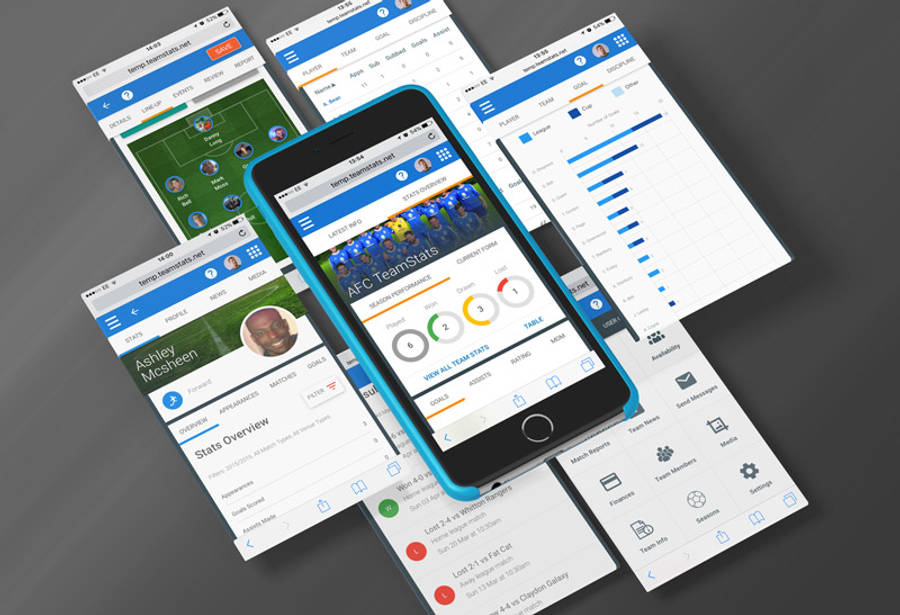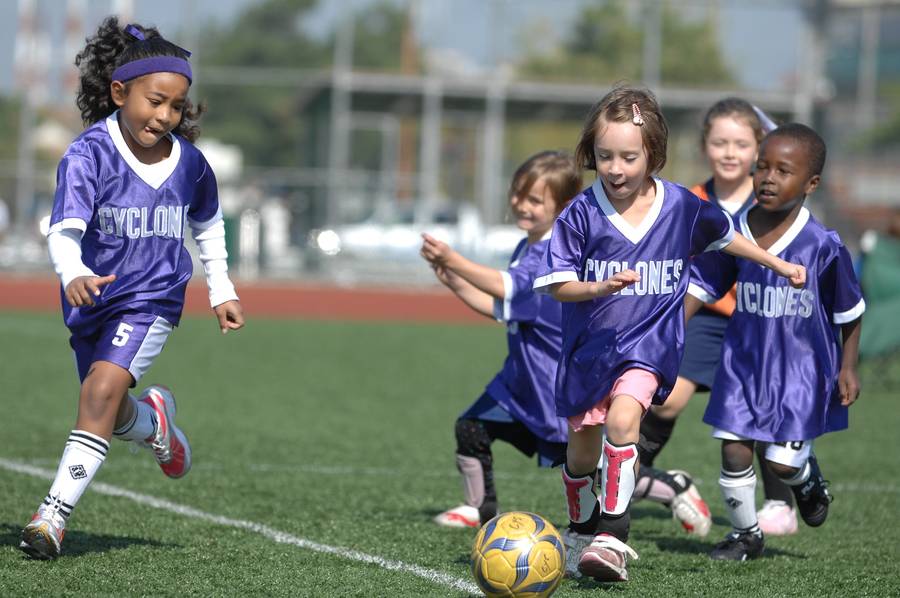
Despite over 40 years involvement in grassroots football, the Sunday morning landscape hasn’t really changed at all. Parents still huddle along touchlines clutching thermos flasks, coaches still shout their instructions through the autumn drizzle and players still emerge from matches often caked in mud with grass stains on their shorts. Yet underneath this familiar scene there have been some big changes along the way. One of the biggest has been the technology which was once thought to belong only to elite academies and even Premier League training grounds is now filtering down to community football, bringing with it possibilities that would have seemed like science fiction when I first started.
From GPS tracking systems monitoring player movements to sophisticated video analysis breaking down tactical patterns, professional football has long since embraced the digital age with open arms.
But what about grassroots football? How is technology reshaping the game at local parks, community pitches and grassroots clubs across the country?
While we may not have access to the multi million pound budgets of Premier League clubs, technology is increasingly becoming a game changer for coaches, players and administrators at every level of the football pyramid.
We know that grassroots football encompasses everything from Sunday league teams to youth academies, school programmes to veteran’s leagues. Traditionally, these organisations have operated with limited resources, relying on volunteer coaches, basic equipment and word of mouth communication. However, the democratisation of technology has opened new possibilities for even the most modest football clubs.
Behind it there has been a quiet revolution. Smartphones have become powerful coaching tools, capable of recording training sessions and matches with broadcast quality clarity. Free and affordable apps can analyse player performance, track fitness metrics and even provide tactical insights that were once the exclusive domain of professional clubs. Cloud based platforms are streamlining club administration, while social media has transformed how teams communicate with players, parents and the wider world.
This technological shift isn't just about having the latest gadgets though, for me it's about changing how grassroots football operates, making it more efficient, more engaging and ultimately more effective at developing players and building communities.
The phrase "data collection" might sound intimidating to a volunteer coach managing a local under- 16 team, but the reality is far more accessible than many realise. Modern data collection in grassroots football doesn't require expensive sensors or complex software, it can be as simple as using a smartphone app to track basic performance metrics during training sessions.
Many grassroots clubs are now using simple video analysis tools to break down match footage, identifying patterns in play and areas for improvement. Apps like Coach's Eye or OnForm allow coaches to slow down video clips, draw tactical diagrams and share insights with players in real time.
This level of analysis, once reserved for professional levels of the game, is now available to anyone with a smartphone and an internet connection.
Player development tracking has also been revolutionised by accessible technology. Digital logbooks can record training attendance, fitness test results and skill progression over time. This data becomes important monitoring development and making informed decisions about squad selection and the focus of training sessions.
Some progressive grassroots clubs are even experimenting with basic GPS tracking during training sessions. While not as sophisticated as professional grade systems, consumer level fitness trackers can provide valuable insights into player work rates, distance covered and recovery patterns.
Technology's impact on coaching in grassroots football extends far beyond simple data collection.
Modern coaching apps provide structured training session plans, libraries of drills and progressive skill development programmes that can transform even inexperienced volunteers into effective coaches. Platforms like Coaches Voice offer comprehensive coaching resources, allowing grassroots coaches to access professional quality training materials and adapt them to their specific needs.
Video analysis has become particularly powerful for player development. Coaches can now record individual players during training or matches, providing personalised feedback that helps accelerate learning. Young players, in particular, respond well to visual feedback and being able to see their technique in slow motion or compare their movements to professional players can be incredibly motivating.
The democratisation of tactical analysis through technology has also levelled the playing field between grassroots and professional Academies. Coaches can now access the same tactical concepts and training methods used by top level teams, adapting them for their local context. Online coaching courses and webinars have made high quality football education accessible to coaches regardless of their location or financial resources.
Technology has also enabled more personalised coaching approaches. Digital platforms can track individual player progress, identify specific areas for improvement and provide tailored training recommendations. This individualised approach helps ensure that no player is left behind and that each team member receives the attention they need to develop their potential.
One of the most significant impacts of technology on grassroots football has been in communication.
Messy and time consuming methods of organising teams such as phone calls and messages have been largely replaced by digital platforms that streamline communication.
Team management apps like TeamStats have revolutionised how grassroots clubs operate. The ability to have a platforms that combines scheduling, communication and all administrative functions in one easy to use interface has been game changing. Coaches can send training updates, share match results and coordinate finances, while parents can confirm attendance, receive important announcements and stay connected.
Social media has also transformed how grassroots clubs engage with their communities. Whilst observing obvious safeguarding protocols, clubs can now share match highlights, celebrate player achievements and build engagement through numerous platforms. This increased visibility helps clubs attract new players, sponsors and volunteers while developing a stronger sense of community pride.
Live streaming technology has brought another dimension to grassroots football, allowing families and friends to watch matches remotely. Simple streaming setups using smartphones or basic cameras can broadcast games to parents who can't attend in person, creating new opportunities for community engagement and support.
The transparency enabled by digital communication has also improved trust and accountability within grassroots clubs. Financial information, training schedules and team policies can be easily shared with members, creating a more open and democratic club environment.
Technology has significant potential to make grassroots football more accessible and inclusive. For players with disabilities, adaptive technologies can provide new opportunities to participate in the sport. Apps that convert visual information to audio can help visually impaired coaches and players, while communication apps can assist those with hearing difficulties. Translation apps and multilingual platforms help break down language barriers in diverse communities, ensuring that football clubs can welcome players and families from all backgrounds. Digital platforms can also provide cost effective alternatives to traditional coaching and training methods, making quality football education more accessible to economically disadvantaged communities.
Remote coaching through video conferencing has opened new possibilities for accessing high quality instruction regardless of geographical location. Rural clubs that previously struggled to find qualified coaches can now connect with experts from around the world, opening up access to top level football education.
Despite its many benefits, the integration of technology in grassroots football faces challenges. The digital divide remains a real issue, with some communities lacking access to reliable internet connections or modern devices. This disparity can create inequalities between clubs, potentially widening the gap between better resourced and struggling organisations.
Cost remains a barrier for many grassroots clubs operating on tight budgets. While basic apps and platforms can often be free or low cost, more advanced technology solutions such as Veo can be expensive, creating difficult decisions about resource allocation. Additionally, the ongoing costs of software subscriptions, device maintenance and technical support can strain limited club finances.
Training and education present another challenge. Many volunteer coaches and administrators lack the technical skills needed to effectively utilise new technologies. Without proper training and support, expensive technological investments can become underutilised or abandoned entirely.
Privacy and data protection concerns are also significant considerations. Grassroots clubs must navigate complex regulations around collecting and storing personal data, particularly when working with young players. Ensuring compliance with data protection laws while maximising the benefits of technology requires careful planning and ongoing attention.
Depending on your view of technology in general, the future of its place within grassroots football looks promising. Artificial intelligence and machine learning are beginning to filter down from professional football, with AI-powered coaching apps and automated video analysis tools becoming more accessible.
Who knows if The Internet of Things could revolutionise equipment management and facility monitoring, while blockchain technology may provide new solutions for player registration and administration systems. As these technologies become more affordable and user friendly, grassroots football will continue to benefit from innovations first developed for professional sport.
The integration of data and technology in grassroots football represents not just an evolution in how the game is played and managed, but a democratisation of opportunities that can benefit every level of the football community. The future of grassroots football is likely to only be more digital and more connected than ever before.


















